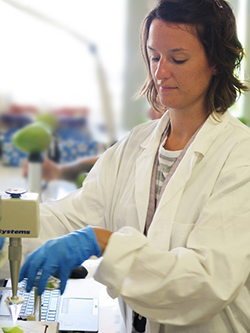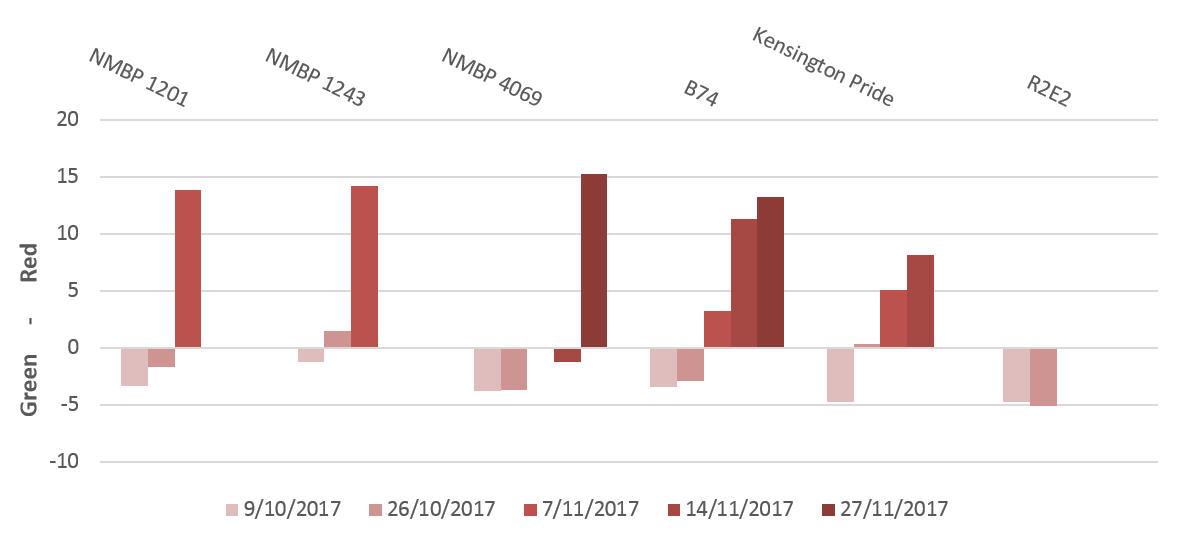Explaining mango maturity with texture and colour
Maddison Clonan
The Northern Territory Department of Primary Industry and Resources (DPIR) team has been working to better understand fruit parameters that can indicate maturity. This work has been largely focussed on changes in fruit dry matter content, however this season, it was expanded to include mango flesh colour and texture. This investigation aimed to characterise the relationship between fruit maturity and these parameters, while also identifying if varieties change relative to the others.
Leading up to the 2017 mango harvest, fruit from several Northern Territory mango varieties were sampled and assessed for their flesh colour and texture. Assessments were made from September to November to measure the changes that occur as fruit matures. The measurements collected were used to compare dry matter changes over time, with changes in flesh colour and texture. Dry matter increases as fruit matures, although this trend is uniform across varieties, the timing and rate of increase did vary. Flesh texture was not found to have a uniform trend of change throughout the measurement period across the varieties assessed. Therefore changes in texture could not indicate maturity. Using objective colour measurement devices, flesh colour was found to redden and darken as dry matter increased in all varieties, however the rate of change differed. For example, flesh of the Kensington Pride variety begins to redden at a higher dry matter than NMBP 1243 variety.
From these results we are able to develop a better understanding of the physiological changes that occur as mangoes mature, and how these changes differ across NT mango varieties.
Table 1: Scale of red to green of mango flesh colour measured during October and November 2017.
Give feedback about this page.
Share this page:
URL copied!

